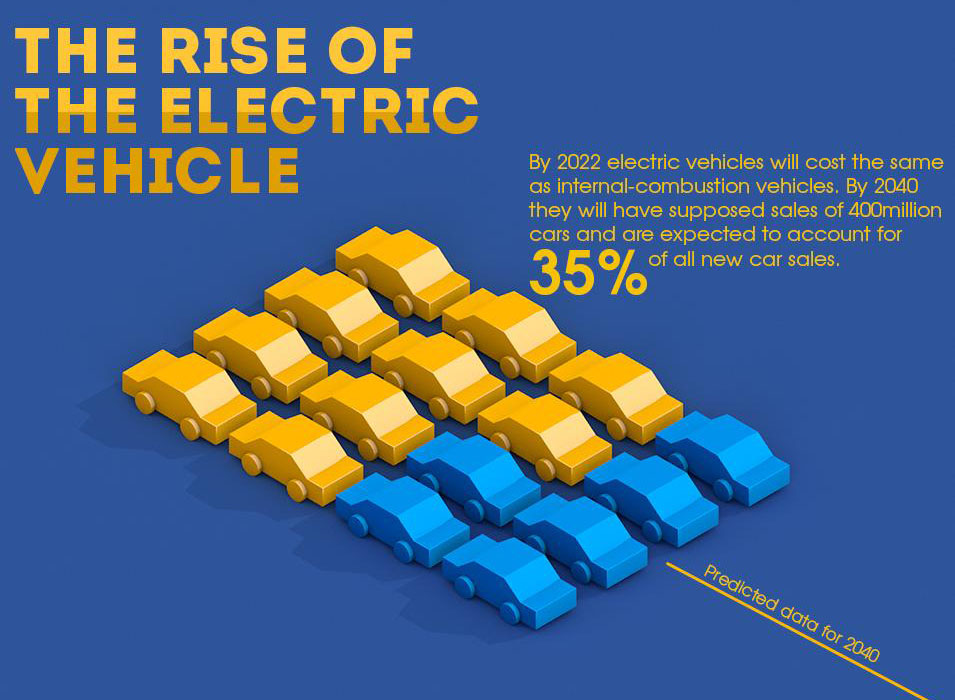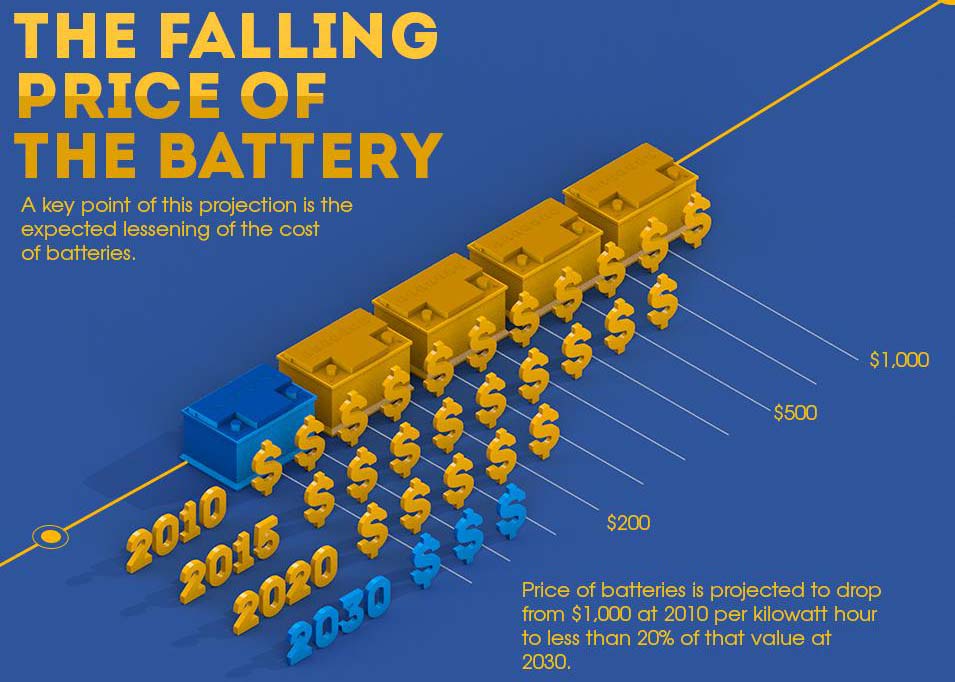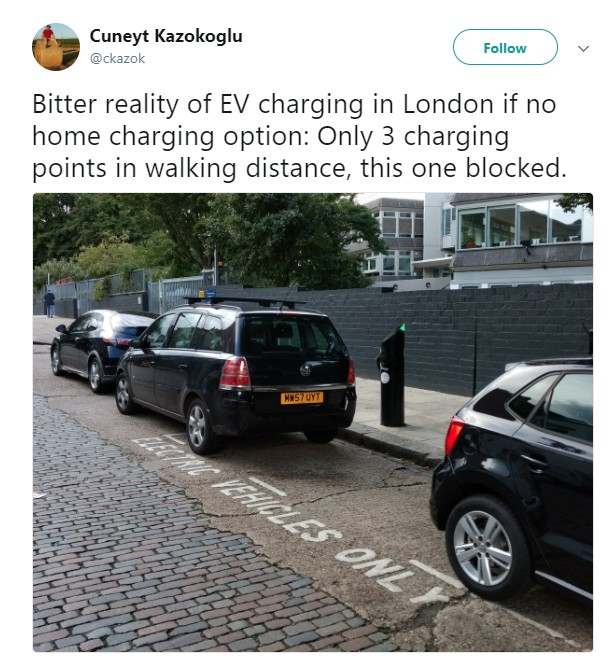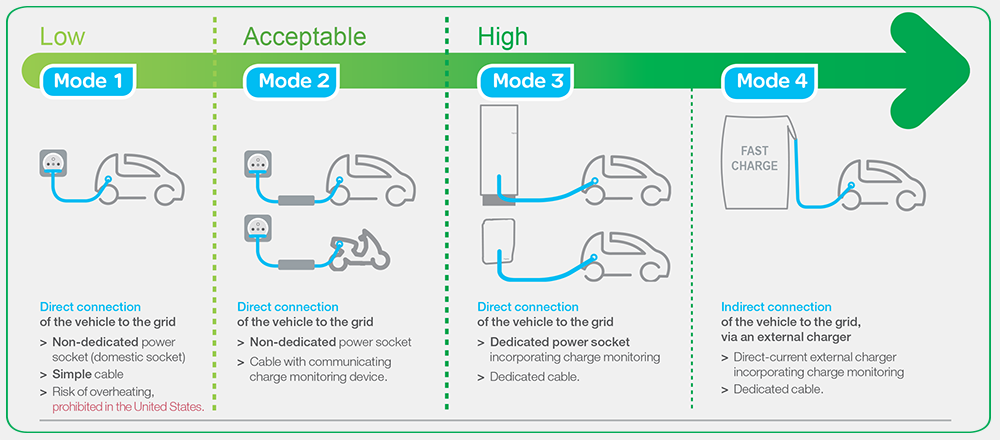The biggest brake in Electric Vehicle (EV) growth cannot be found in the EV.
All agree that the future of transport is the EV.

The press is full of news about the number of EVs increasing, batteries getting cheaper while the EV kilometric distance range, getting longer and longer.

The will of governments to promote the EV is strong and increasing around the World.
The arguments, why the volume of EVs has not risen faster, have centered on the high price and limited range. These are viewed by many as the major growth obstacles in the EV expansion. – This is not true.
Neither the kilometric range (known as range anxiety) nor its price, is the biggest brake to the EV growth. For most car users the range is satisfactory and the price is affordable to a significant Consumer section.
The biggest brake in EV growth is Legal and Regulatory. This has many facets but only a dominant one: CHARGING.
This can be demonstrated by examining the EV conditions in one of the most modern, technologically advanced, digitized and innovative cities in the World, Dubai.
Dubai has an excellent network of modern roads and highways. Private and commercial car use is extensive. There is a significant section of the population that can afford the cost of an EV and willing to do so. Moreover Dubai and the whole of the U.A.E. can be accessed by the present kilometric range capability of electric vehicles.
In spite of, all the above advantages, the EV will progress slowly unless the charging issue has been resolved. In principle, this requires a legal and regulatory framework that will set the rules for charging. This framework will cover the infrastructure needs, rules and regulations of charging points, charging speeds and charging costs.
The charging issue can be resolved with, the same innovative institutional intervention, which has made the Dubai desert bloom.
For instance, today an owner of an electric car who lives in a villa can easily install a charging station. This is not that easy for an owner of an electric car that lives in a multi floor building.
This problem is not new and it is not only faced in Dubai. In spite of the generous incentives of DEWA (Dubai Electricity and Water Authority) and RTA (Roads and Transport Authority) which give ample financial and practical support to the EVs, 100 or 200 public charging stations are not enough. The State has done over and above its duty. Much more is needed and it has to come from private sector participation, based upon an appropriate legal and regulatory framework.
The experience of an electric car owner, Cüneyt Kazokoglu, in London is rather revealing:

“Beyond lampposts and kettles blowing fuses, the bitter reality of EV charging in London: I don’t have a home charging option and there are just 3 public charging points in walking distance (<15 mins).
What do you do if:
- You cannot charge at home
- Charging point blocked
- More cars than charging points?
Do you still consider buying an EV or rather wait until this problem is sorted?”
Like everything else, Electric Vehicle charging, needs REGULATION.
DVK CONSULTANTS have studied extensively successful and unsuccessful examples around the World and came to the following conclusions regarding:
- Legislation recommendations for EV’s uptake and
- Regulation to promote EV expansion:
LEGISLATION RECOMMENDATIONS FOR EV UPTAKE
The recommendations for a strong market uptake are:
- The Dubai Supreme Council of Energy is the Regulatory Authority that is competent to regulate all matters regarding EVs. This Authority sets also the Standards of Charging Infrastructure.
- This Authority should decide the set of directives & incentives to reach the market penetration target (desired number of EVs) and implement the required charging infrastructure.
- This Authority should set stricter emission limits for commercial fleets to promote a wider use of electric vehicles.
- Consumers need to be informed through specific communication campaigns about the advantages of EVs.
- The State Public Authorities should be encouraged to procure EVs for their needs (A quota set by the State would be the driver).
- Standards for Charging Infrastructure need to be implemented effectively through a set of national regulation.
EV REGULATION
In Europe there are various regulations in connection with EVs but there is no direct regulation for EVs as such. This is being prepared by the Services of the European Commission now.
The most important documents issued by the European Commission are presented here below:
- Directive 2009/33/EC on the promotion of clean and energy-efficient road transport vehicles -“Clean Vehicles Directive”
- Regulation 443/2009 on the Emission performance standards for new passenger cars Communication – A European strategy on clean and energy efficient vehicles (2010)
- Directive 2014/94/EU on the deployment of alternative fuels infrastructure
- European Strategy for low-emission mobility (2016)
- Future regulations (and review of existing directives), including Energy Taxation Directive and Eurovignette Directive.
Directive 2014/94/EU on the deployment of alternative fuels infrastructure lays down rules to ensure the build-up of alternative refueling points across Europe with common standards for design and use, including a common plug for recharging electric vehicles. It Requires Member States to develop national policy frameworks for the market development of alternative fuels and their infrastructure and foresees the use of common technical specifications for recharging and refueling stations
STANDARDS OF CONDUCTIVE CHARGING

Except the Directive 2014/94/EU, the IEC (International Electro technical Commission) technical standard 61851 has defined the following 4 modes of conductive charging:
- Mode 1 (AC): slow charging from a standard household-type socket-outlet, up to 16 Amperes, without any specific safety or control feature
- Mode 2 (AC): slow charging from a standard household-type socket-outlet, up to 16 Amperes, with an in-cable protection device and a power level control that protects the user and the vehicle
- Mode 3 (AC): slow or fast charging using a specific EV socket-outlet and plug with control and protection function permanently installed (for malls, petrol stations, parking areas etc.)
- Mode 4 (DC): fast charging using an external charger with an AC/DC converter providing direct current with power levels starting at 50 kW (mainly for parking spots along national roads or places where the driver is in a hurry to recharge its car battery).
In addition, the IEC technical standard 62196 has standardized the four design options for the physical plugs required to connect electric vehicles to the charging equipment. Each plug type has different electrical features in terms of power and voltages.
DVK CONSULTANTS, through extensive and impartial observation of the evolution of the EV issue, have developed the knowledge to define the Institutional interventions required, as a base and groundwork, for a smooth evolution of the EV adoption and progress.

